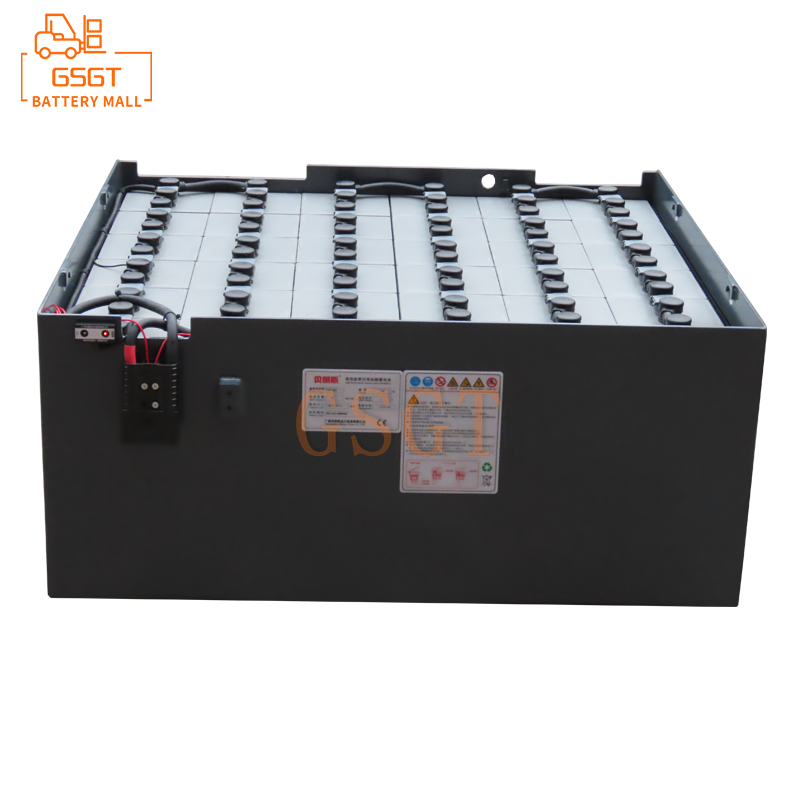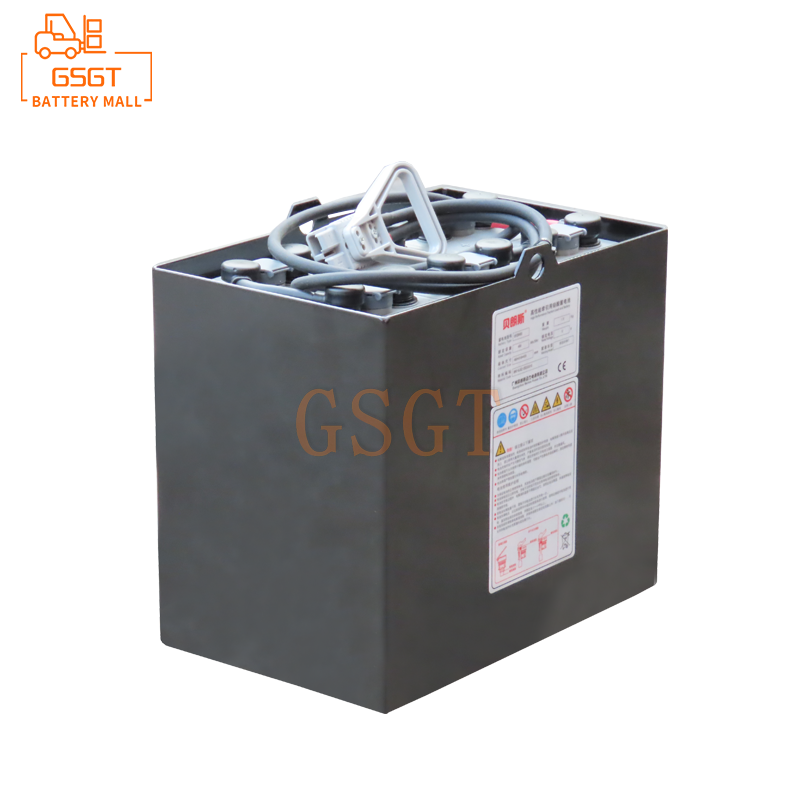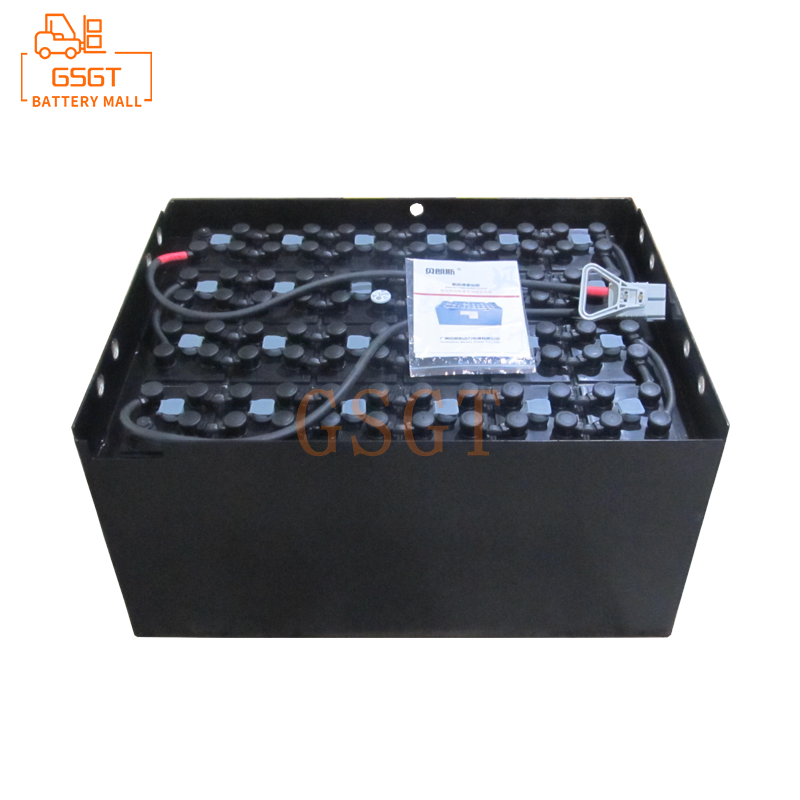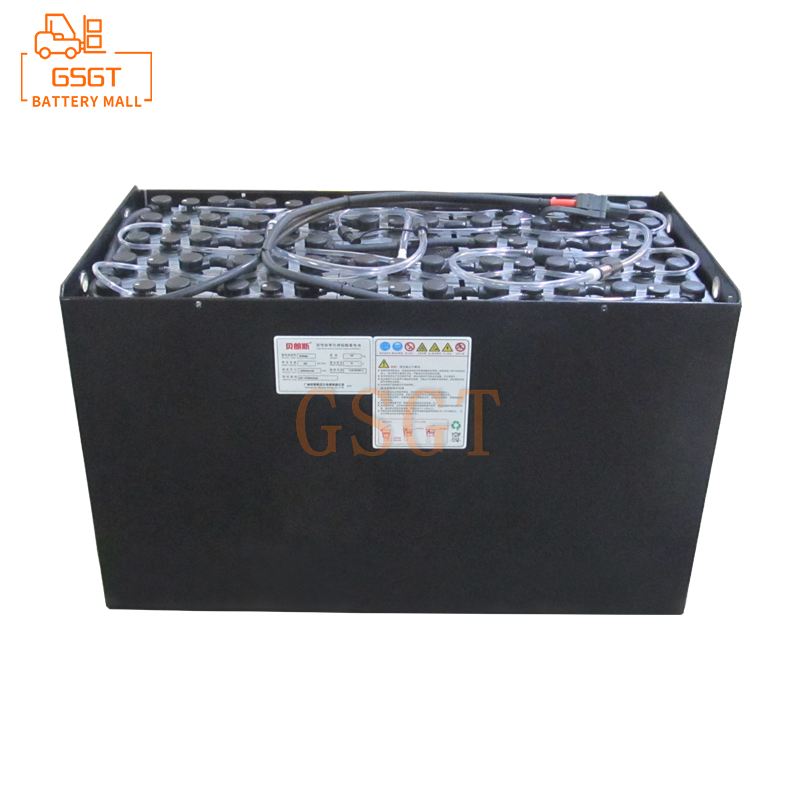Time:2025-06-05 11:39:43
Browse:587
In the modern logistics and warehousing field, forklifts, as indispensable handling equipment, the performance of their power core - lead-acid batteries - directly affects operational efficiency and operating costs. When the lead-acid battery of a forklift experiences abnormal self-discharge, it not only leads to a decrease in the forklift's endurance and difficulty in starting, but may even cause equipment failure and delay the work progress. How to locate faults quickly and accurately has become an urgent problem for maintenance personnel and equipment managers to solve. This article will provide you with a systematic three-step rapid positioning method to help you efficiently solve the problem of abnormal self-discharge of lead-acid batteries in forklifts.
Step 1: Observation and initial detection to identify the fault symptoms
After discovering that the lead-acid battery of the forklift has abnormal self-discharge, the first step is to conduct a detailed observation and initial detection. This step is like a doctor's consultation, narrowing down the fault range by understanding the symptoms.
1.1 Visual Inspection
Carefully inspect the battery case for any damage, cracks or deformations. Tiny cracks may cause electrolyte leakage, which not only corrodes the components around the battery but also alters the chemical balance inside the battery, thereby triggering abnormal self-discharge. At the same time, check if there are any traces of electrolyte residue on the surface of the battery casing. If there are, clean them thoroughly and inspect the leakage points. In addition, check whether the battery terminals are oxidized, corroded or loose. Oxidation of the terminal post will increase the contact resistance, resulting in current loss and causing self-discharge. Loose terminals may generate electric sparks, which not only pose safety hazards but also accelerate the chemical reactions inside the battery, resulting in power loss. The oxidized terminal posts can be sanded with sandpaper to restore their surface to a bright state, and the connecting bolts should be tightened to ensure a tight connection.
1.2 Electrolyte status detection
Open the liquid injection hole cover on the battery and observe the liquid level and color of the electrolyte. Under normal circumstances, the electrolyte level should be between the upper and lower liquid level lines. If the liquid level is too low, it may be due to the evaporation or leakage of the electrolyte, which will expose the plates to the air, accelerate the sulfation of the plates, thereby affecting the battery performance and causing abnormal self-discharge. At this point, distilled water or special lead-acid battery replenishment fluid needs to be added to the appropriate level. Meanwhile, observe the color of the electrolyte. A normal electrolyte should be clear and transparent or slightly light yellow. If the electrolyte becomes cloudy or black, it indicates that there may be severe sulfation of the plates or shedding of active substances inside the battery, all of which can lead to an intensification of self-discharge. For turbid electrolyte, it is recommended to replace the electrolyte and perform deep maintenance on the battery.
1.3 Battery Voltage measurement
Use a high-precision multimeter to measure the terminal voltage of the battery in a static state (uncharged and undischarged). Generally speaking, the normal voltage of a single-cell lead-acid battery is approximately 2.1V. If the measured value is significantly lower than the normal range, it indicates that the battery has a self-discharge phenomenon. To make a more accurate judgment, the voltage can be measured and then left to stand for a period of time before being measured again. If the voltage drop is significant, for instance, by more than 0.05V per hour, it can be initially determined that the self-discharge abnormality is relatively serious and further in-depth investigation is required.
Step 2: Core component inspection to thoroughly investigate the root cause of the fault
After completing the initial detection of the first step, we have gained a certain understanding of the fault. Next, it is necessary to inspect the core components of the battery to identify the root cause of the abnormal self-discharge.
2.1 Plate inspection
The plates are the key components for lead-acid batteries to achieve the mutual conversion of electrical energy and chemical energy. Problems with the plates are one of the common causes of abnormal self-discharge. Observe whether there are obvious sulfide crystals on the surface of the plates. Sulfide crystals are usually manifested as white, hard granular substances adhering to the surface of the plates. Vulcanization will reduce the active material on the plates and increase the resistance, thereby leading to self-discharge. If sulfation of the plates is found, it can be repaired by charging with a small current for a long time, or by using a dedicated sulfation repair equipment for the plates.
Meanwhile, check whether the plates are deformed, bent or broken. Deformation of the plates can disrupt the internal structural balance of the battery, causing poor contact or short circuits between the plates and triggering self-discharge. For slightly deformed plates, careful correction can be carried out. However, if the plates are severely fractured, a new plate group needs to be replaced. In addition, observe whether there is any shedding of the active substances on the plates. The shedding of active substances will reduce the effective area of the plates, lower the battery capacity and intensify self-discharge. When a large amount of active substances are found to have fallen off, it is usually necessary to replace the entire battery.
2.2 Partition Inspection
The function of the separator is to separate the positive and negative plates to prevent short circuits, and at the same time allow ions in the electrolyte to pass through, ensuring the normal chemical reactions of the battery. Check whether the partition has any damage, perforation or aging. Damaged or perforated separators will cause the positive and negative plates to come into direct contact, resulting in a short circuit and triggering severe self-discharge. Once the partition is found to be damaged, it must be replaced with a new one in time. In addition, the aging of the separator will lead to a decline in its insulation performance and may also cause abnormal self-discharge. For aged separators, they also need to be replaced to ensure the normal operation of the battery.
2.3 Electrolyte density detection
Measuring the density of the electrolyte with a hydrometer is an important indicator for determining whether the chemical reactions inside the battery are normal. Different types and specifications of lead-acid batteries have corresponding standard values for the density of the electrolyte. Generally speaking, at 25℃, the density of the electrolyte in a fully charged lead-acid battery is approximately 1.28g/cm³. If the measured density of the electrolyte is significantly lower than the standard value, it indicates that the battery may have problems such as excessive discharge, severe self-discharge or abnormal composition of the electrolyte. If the density is too high, it may be due to insufficient distilled water added or excessive evaporation of water inside the battery, resulting in an excessively high concentration of the electrolyte. This will also affect the battery performance and cause self-discharge. Based on the measurement results, the density of the electrolyte can be appropriately adjusted. If the density is too low, an electrolyte with a higher density can be added. If the density is too high, add distilled water for dilution.
Step 3: External factor analysis to eliminate potential influences
Apart from problems with the battery itself, some external factors may also cause abnormal self-discharge of lead-acid batteries in forklifts. After completing the first two steps of internal inspection of the battery, a comprehensive analysis of external factors is also required to ensure the completeness of the fault investigation.
3.1 Charging system inspection
Check whether the charging system of the forklift is working properly. First, check whether the output voltage and current of the charger meet the specification requirements of the battery. If the output voltage of the charger is too high, it will cause the battery to overcharge, accelerate the chemical reactions inside the battery, and intensify self-discharge. If the output voltage is too low, the battery cannot be fully charged, leaving it in a state of low charge for a long time, which will also cause abnormal self-discharge. Use a multimeter to measure the output voltage and current of the charger during the charging process and compare them with the rated parameters of the battery. If there is a deviation, the charger needs to be repaired or replaced.
At the same time, check whether there is a short circuit, open circuit or poor contact in the charging line. A short circuit in the charging circuit can lead to an abnormal increase in current, causing the battery to heat up and self-discharge. Open circuit or poor contact will cause unstable charging, affecting the normal charging and service life of the battery. Carefully inspect each connection point of the charging circuit to ensure a firm connection without any loosening or oxidation. When necessary, an insulation resistance meter can be used to test the insulation performance of the circuit and eliminate self-discharge abnormalities caused by circuit problems.
3.2 Working Environment Analysis
The working environment of forklifts has a significant impact on the performance of lead-acid batteries. High-temperature environments will accelerate the evaporation of the electrolyte and the chemical reactions inside the battery, leading to a faster self-discharge. If forklifts operate for a long time in high-temperature environments, measures should be taken to provide heat dissipation for the batteries as much as possible, such as installing cooling fans or choosing to operate during periods with lower temperatures. At the same time, a humid environment can easily cause the battery casing and terminals to get damp, leading to leakage and self-discharge. The surrounding environment of the battery should be kept dry to prevent it from coming into direct contact with moisture. If the battery has become damp, it should be dried in time, and the terminals should be checked for oxidation. Corresponding cleaning and maintenance should be carried out.
In addition, dust and corrosive gases in the working environment of forklifts may also cause damage to the batteries. Excessive dust will adhere to the surface of the battery, forming a conductive layer and causing the battery to self-discharge. Corrosive gases can corrode the battery casing and terminals, affecting battery performance. Regularly clean the battery, remove dust and dirt from the surface, and ensure good ventilation in the working environment to reduce the accumulation of corrosive gases.
3.3 Equipment load inspection
Check whether there is any abnormal load on the electrical equipment of the forklift. Some electrical component malfunctions or short circuits in the lines may result in current consumption even when the forklift is not in operation, causing the battery to self-discharge. Check the forklift's lights, horns, instrument panels, hydraulic control systems and other electrical equipment and their circuits one by one. One can observe whether the self-discharge of the battery improves by disconnecting the connections of various electrical devices. If the self-discharge of a certain device significantly decreases after disconnection, it indicates that there is a problem with the device or its connected circuit, and further inspection and repair are required.
Through the above three-step system fault location method, from observing the appearance to detecting the core components, and then to analyzing the external factors, the causes of abnormal self-discharge of the forklift lead-acid battery can be comprehensively and quickly identified. In actual operation, maintenance personnel should strictly follow the steps for inspection, combine professional detection equipment and rich experience, accurately solve problems, ensure the normal operation of forklift lead-acid batteries, and improve the efficiency and safety of logistics and warehousing operations.

$4045

$400

$5010

$3260

MESSAGE
Professional And Efficient
Security
Affordable Price
Professional Services